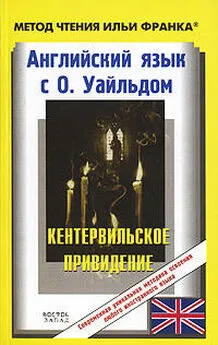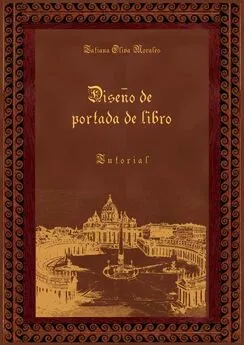Oskar Andreasson - Iptables Tutorial 1.2.2
- Название:Iptables Tutorial 1.2.2
- Автор:
- Жанр:
- Издательство:неизвестно
- Год:неизвестен
- ISBN:нет данных
- Рейтинг:
- Избранное:Добавить в избранное
-
Отзывы:
-
Ваша оценка:
Oskar Andreasson - Iptables Tutorial 1.2.2 краткое содержание
Iptables Tutorial 1.2.2 - читать онлайн бесплатно полную версию (весь текст целиком)
Интервал:
Закладка:
PSH- bit 108. The PUSH flag is used to tell the TCP protocol on any intermediate hosts to send the data on to the actual user, including the TCP implementation on the receiving host. This will push all data through, unregardless of where or how much of the TCP Window that has been pushed through yet.
RST- bit 109. The RESET flag is set to tell the other end to tear down the TCP connection. This is done in a couple of different scenarios, the main reasons being that the connection has crashed for some reason, if the connection does not exist, or if the packet is wrong in some way.
SYN- bit 110. The SYN (or Synchronize sequence numbers) is used during the initial establishment of a connection. It is set in two instances of the connection, the initial packet that opens the connection, and the reply SYN/ACK packet. It should never be used outside of those instances.
FIN- bit 111. The FIN bit indicates that the host that sent the FIN bit has no more data to send. When the other end sees the FIN bit, it will reply with a FIN/ACK. Once this is done, the host that originally sent the FIN bit can no longer send any data. However, the other end can continue to send data until it is finished, and will then send a FIN packet back, and wait for the final FIN/ACK, after which the connection is sent to a CLOSED state.
Window- bit 112 - 127. The Window field is used by the receiving host to tell the sender how much data the receiver permits at the moment. This is done by sending an ACK back, which contains the Sequence number that we want to acknowledge, and the Window field then contains the maximum accepted sequence numbers that the sending host can use before he receives the next ACK packet. The next ACK packet will update accepted Window which the sender may use.
Checksum- bit 128 - 143. This field contains the checksum of the whole TCP header. It is a one's complement of the one's complement sum of each 16 bit word in the header. If the header does not end on a 16 bit boundary, the additional bits are set to zero. While the checksum is calculated, the checksum field is set to zero. The checksum also covers a 96 bit pseudoheader containing the Destination-, Source-address, protocol, and TCP length. This is for extra security.
Urgent Pointer- bit 144 - 159. This is a pointer that points to the end of the data which is considered urgent. If the connection has important data that should be processed as soon as possible by the receiving end, the sender can set the URG flag and set the Urgent pointer to indicate where the urgent data ends.
Options- bit 160 - **. The Options field is a variable length field and contains optional headers that we may want to use. Basically, this field contains 3 subfields at all times. An initial field tells us the length of the Options field, a second field tells us which options are used, and then we have the actual options. A complete listing of all the TCP Options can be found in TCP options .
Padding- bit **. The padding field pads the TCP header until the whole header ends at a 32-bit boundary. This ensures that the data part of the packet begins on a 32-bit boundary, and no data is lost in the packet. The padding always consists of only zeros.
UDP characteristics
The User Datagram Protocol (UDP) is a very basic and simple protocol on top of the IP protocol. It was developed to allow for very simple data transmission without any error detection of any kind, and it is stateless. However, it is very well fit for query/response kind of applications, such as for example DNS, et cetera, since we know that unless we get a reply from the DNS server, the query was lost somewhere. Sometimes it may also be worth using the UDP protocol instead of TCP, such as when we want only error/loss detection but don't care about sequencing of the packets. This removes some overhead that comes from the TCP protocol. We may also do the other thing around, make our own protocol on top of UDP that only contains sequencing, but no error or loss detection.
The UDP protocol is specified in RFC 768 - User Datagram Protocol . It is a very short and brief RFC, which fits a simple protocol like this very well.
UDP headers
The UDP header can be said to contain a very basic and simplified TCP header. It contains destination-, source-ports, header length and a checksum as seen in the image below.
Source port- bit 0-15. This is the source port of the packet, describing where a reply packet should be sent. This can actually be set to zero if it doesn't apply. For example, sometimes we don't require a reply packet, and the packet can then be set to source port zero. In most implementations, it is set to some port number.
Destination port- bit 16-31. The destination port of the packet. This is required for all packets, as opposed to the source port of a packet.
Length- bit 32-47. The length field specifies the length of the whole packet in octets, including header and data portions. The shortest possible packet can be 8 octets long.
Checksum- bit 48-63. The checksum is the same kind of checksum as used in the TCP header, except that it contains a different set of data. In other words, it is a one's complement of the one's complement sum of parts of the IP header, the whole UDP header, theUDP data and padded with zeroes at the end when necessary.
ICMP characteristics
ICMP messages are used for a basic kind of error reporting between host to host, or host to gateway. Between gateway to gateway, a protocol called Gateway to Gateway protocol (GGP) should normally be used for error reporting. As we have already discussed, the IP protocol is not designed for perfect error handling, but ICMP messages solves some parts of these problems. The big problem from one standpoint is that the headers of the ICMP messages are rather complicated, and differ a little bit from message to message. However, this will not be a big problem from a filtering standpoint most of the time.
The basic form is that the message contains the standard IP header, type, code and a checksum. All ICMP messages contains these fields. The type specifies what kind of error or reply message this packet is, such as for example destination unreachable, echo, echo reply, or redirect message. The code field specifies more information, if necessary. If the packet is of type destination unreachable, there are several possible values on this code field such as network unreachable, host unreachable, or port unreachable. The checksum is simply a checksum for the whole packet.
As you may have noticed, I mentioned the IP header explicitly for the ICMP packet. This was done since the actual IP header is an integral part of the ICMP packet, and the ICMP protocol lives on the same level as the IP protocol in a sense. ICMP does use the IP protocol as if it where a higher level protocol, but at the same time not. ICMP is an integral part of IP, and ICMP must be implemented in every IP implementation.
ICMP headers
As already explained, the headers differs a little bit from ICMP type to ICMP type. Most of the ICMP types are possible to group by their headers. Because of this, we will discuss the basic header form first, and then look at the specifics for each group of types that should be discussed.

All packets contain some basic values from the IP headers discussed previously in this chapter. The headers have previously been discussed at some length, so this is just a short listing of the headers, with a few notes about them.
•
● Version - This should always be set to 4.
● Internet Header Length - The length of the header in 32 bit words.
● Type of Service - See above. This should be set to 0, as this is the only legit setting according to RFC 792 - Internet Control Message Protocol .
● Total Length - Total length of the header and data portion of the packet, counted in octets.
● Identification , Flags and Fragment offsets - Ripped from the IP protocol.
● Time To Live - How many hops this packet will survive.
● Protocol - which version of ICMP is being used (should always be 1).
● Header Checksum - See the IP explanation.
● Source Address - The source address from whom the packet was sent. This is not entirely true, since the packet can have another source address, than that which is located on the machine in question. The ICMP types that can have this effect will be noted if so.
● Destination Address - The destination address of the packet
There are also a couple of new headers that are used by all of the ICMP types. The new headers are as follows, this time with a few more notes about them:
● Type- The type field contains the ICMP type of the packet. This is always different from ICMP type to type. For example ICMP Destination Unreachable packets will have a type 3 set to it. For a complete listing of the different ICMP types, see the ICMP types appendix. This field contains 8 bits total.
● Code- All ICMP types can contain different codes as well. Some types only have a single code, while others have several codes that they can use. For example, the ICMP Destination Unreachable (type 3) can have at least code 0, 1, 2, 3, 4 or 5 set. Each code has a different meaning in that context then. For a complete listing of the different codes, see the ICMP types appendix. This field is 8 bits in length, total. We will discuss the different codes a little bit more in detail for each type later on in this section.
● Checksum- The Checksum is a 16 bit field containing a one's complement of the ones complement of the headers starting with the ICMP type and down. While calculating the checksum, the checksum field should be set to zero.
At this point the headers for the different packets start to look different also. We will describe the most common ICMP Types one by one, with a brief discussion of its headers and different codes.
ICMP Echo Request/Reply

I have chosen to speak about both the reply and the request of the ICMP echo packets here since they are so closely related to each other. The first difference is that the echo request is type 8, while echo reply is type 0. When a host receives a type 8, it replies with a type 0.
When the reply is sent, the source and destination addresses switch places as well. After both of those changes has been done, the checksum is recomputed, and the reply is sent. There is only one code for both of these types, they are always set to 0.
● Identifier- This is set in the request packet, and echoed back in the reply, to be able to keep different ping requests and replies together.
● Sequence number- The sequence number for each host, generally this starts at 1 and is incremented by 1 for each packet.
The packets also contains a data part. Per default, the data part is generally empty, but it can contain a userspecified amount of random data.
ICMP Destination Unreachable

The first three fields seen in the image are the same as previously described. The Destination Unreachable type has 16 basic codes that can be used, as seen below in the list.
Читать дальшеИнтервал:
Закладка:










